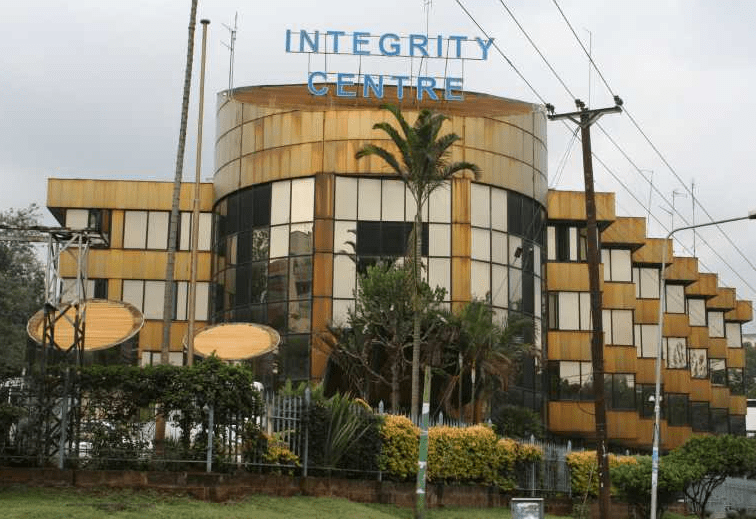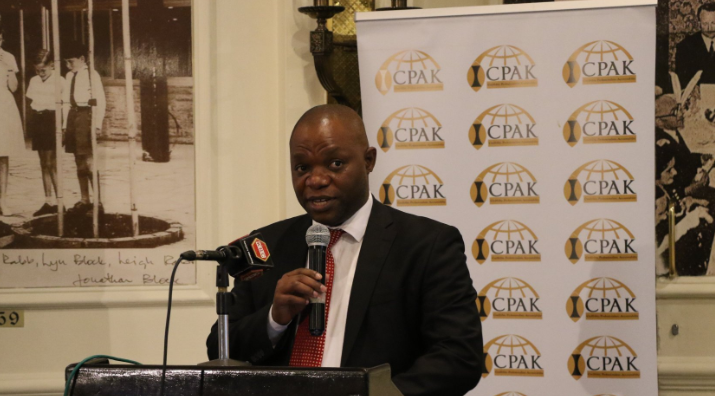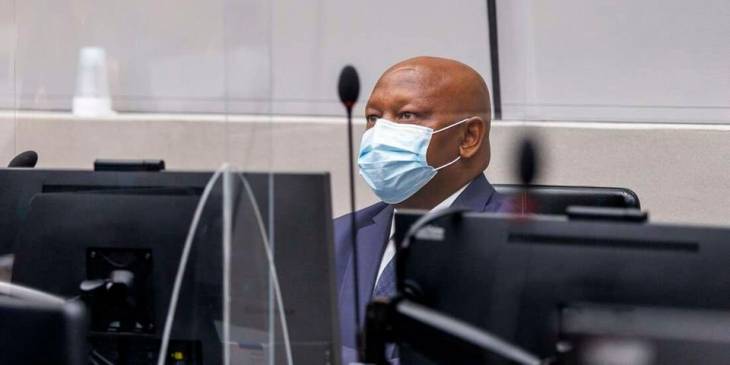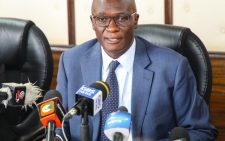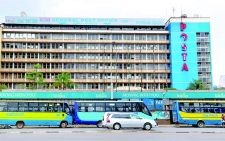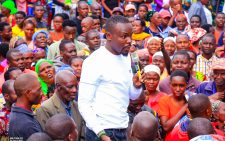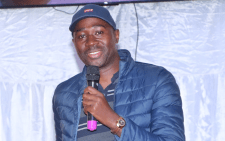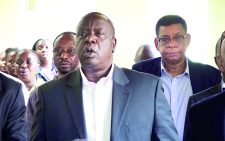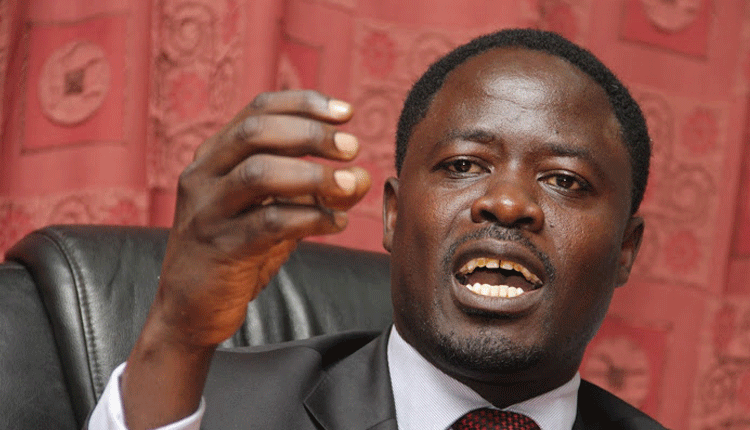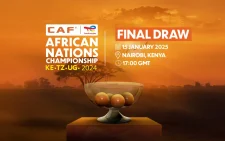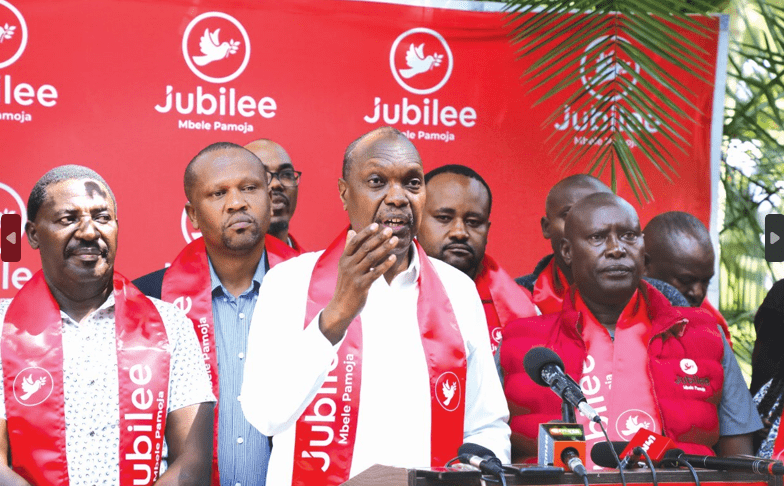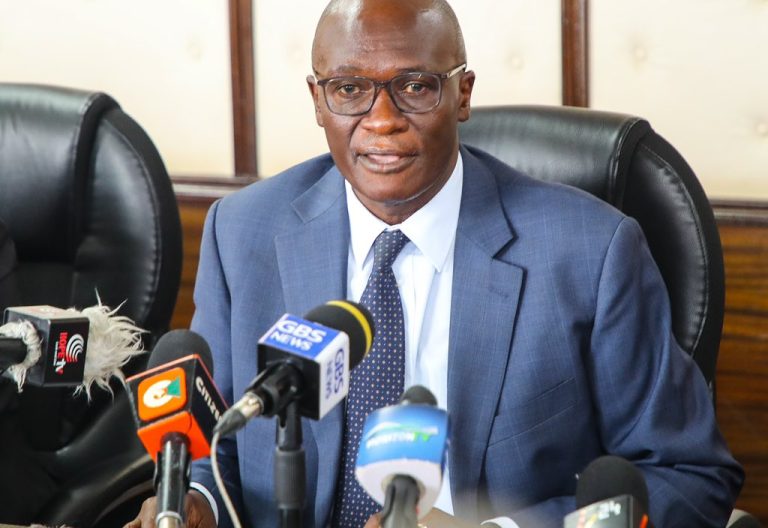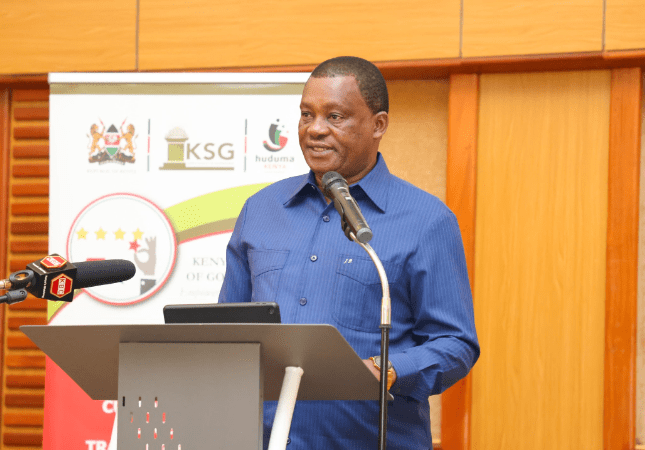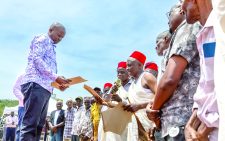Tall order protecting witnesses and whistle-blowers in Kenya
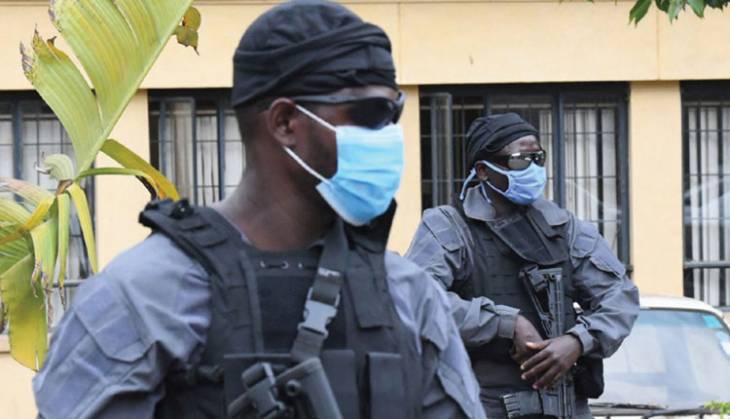
Kenya is one of few countries in East and southern Africa with an institutional witness protection programme.
The derailing of justice through the intimidation of witnesses looms large in the country’s political history.
In 2015, International Criminal Court (ICC) charges of crimes against humanity, related to ethnic violence following the 2007 Kenyan elections, against six Kenyans collapsed.
The ICC prosecutor said that the cases were withdrawn due to interference with witnesses, including bribery and threats.
Among the ICC witnesses killed was Meshack Yebei, who had been expected to testify against Deputy President Ruto.
Violence against witnesses has reportedly grown worse in the years since. ‘It’s an issue of huge concern; it has taken on a new level,’ said Otsieno Namwaya, East Africa Director at Human Rights Watch.
‘The problem with this is that it will have a negative effect on the delivery of justice; witnesses will be scared; they won’t want to take part in court proceedings.’
In several high-profile incidents, witnesses have been threatened, harassed or killed.
Among these are Jennifer Wambua, who was killed in March 2021, and police sergeant Kipyegon Kenei, killed in February 2021.
Wambua, a deputy communications director at the National Land Commission, was a key witness in a case where a vocal MP and a former top bureaucrat were charged with conspiring to defraud the government of Sh122.3 million.
Her body was dumped in a thicket kilometres away from her office in Nairobi.
Powerful individuals
Sergeant Kenei, a bodyguard and confidant of Deputy President Ruto, was drugged and shot dead ‘by powerful individuals’, according to the Director of Criminal Investigations.
Kenei was a potential witness in a case in which several people (among them a former Cabinet secretary) allegedly used Dr Ruto’s office to attempt to defraud foreign investors of billions of shillings in a fake military tender.
These killings led civil society groups and human rights advocates to sound the alarm about the dangerous environment for Kenyan whistle-blowers and witnesses.
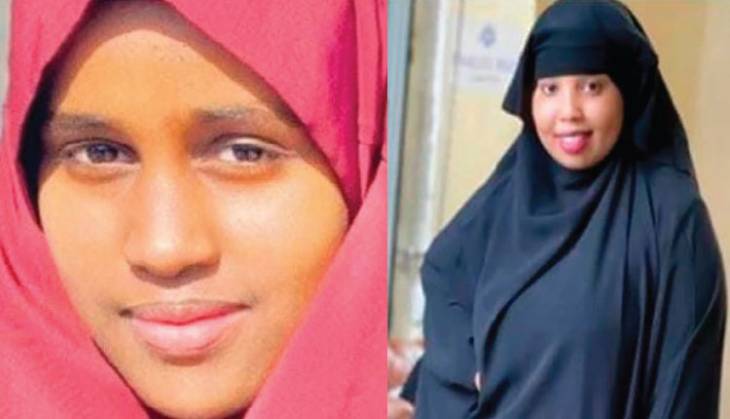
That Wambua, a director in a national institution, “can be targeted and eliminated that easily means that almost every witness is insecure and can thus be interfered with easily,” said human rights activist Stephen Njuguna.
Wambua had expressed fears for her security. According to a leading crime reporter with a local daily, “she always asked court reporters not to mention her name every time she appeared in court as a witness in the corruption case”.
The threats facing whistle-blowers in such cases are enormous, Rose Mwaura, the chairperson of the Institute of Certified Public Accountants of Kenya (ICPAK) says: “Some have ended up losing their lives or voluntarily or involuntarily leaving their jobs.
Many others have suffered through long-term unemployment, financial instability, anxiety, alcoholism, social isolation, violence, discrimination, marital problems among others.”
High-level corruption lies at the centre of almost all these cases. Human rights lawyer Lempaa Suyianka mentioned four cases in which governors face corruption and murder charges, and said that securing witnesses is difficult: “To protect the witnesses testifying against such people is very tough. It’s very easy to compromise witnesses in these cases.”
Transparency International’s 2019 Kenya Bribery Index suggests that the issue is systemic.
About 87 per cent of Kenyans who witnessed bribery incidents did not come forward to report corruption, with 20 percent of these citing fears of intimidation or reprisal as the reason.
Witness protection agency
Kenya’s Witness Protection Agency (WPA) is mandated to protect witnesses at risk of, or facing, intimidation.
Protection measures include redacting identifying information from court documents, allowing witnesses to testify by video link and distorting their voices, physically protecting them in court, changing their identity, and relocating them and those close to them to another city, state or even country.
Alice Ondieki, CEO of the WPA, points out that none of the witnesses killed in Kenya were formally under the WPA’s protection.
“Our mandate does not cover anyone who is not in our programme,” she said in an interview.
There was also no formal recommendations for protection on their behalf by the Directorate of Public Prosecutions (DPP), under which the WPA falls.
Some of these cases were new in court and the DPP had not yet filed for the protection of witnesses involved.
However, questions are being raised – by witnesses themselves, civil society and other Kenyan institutions – about the WPA’s capacity to provide adequate protection to all witnesses who may need it.
In February 2021, the National Council on Administration of Justice reported that “[witness protection schemes are grossly inadequate to cover all the vulnerable witnesses, especially in cases such as murder, robbery and cases involving high-value subject matters. Many witnesses withdraw from such matters fearing harm from the accused.”
The WPA has faced consistent funding shortages since its inception, with the government’s budget allocation rarely meeting even 25 per cent of the Agency’s estimated need.
While funding has remained low, demand for witness protection has increased: WPA data shows an increase in applications for admission into the witness protection programme over the past ten years.
This means the WPA can handle at most only half of the 100–300 applications it receives per year.
About 720 witnesses have been admitted into the programme since it began operations in 2011.
“The money we have is not enough,” said Alice Ondieki. “We continue admit-ting witnesses but the budget has always remained the same. Lengthy trials have also made the programme very expensive.”
WPA officials have publicly raised the alarm about funding shortages in previous years, and has relied on international donors.
In the last two years, the EU and the United Nations Office on Drugs and Crime have donated laptops, printers and scanners, four trucks, safes and digital voice recorders.
The situation is compounded by a backlog of cases in Kenya’s judicial system, which the judiciary itself describes as ‘severe’ and a perennial challenge.
The council estimates that more than 250,000 cases remain unresolved more than one year after being filed in magistrates’ courts alone, emphasising that “delay in prosecution of criminal matters not only affects the right to fair trial but also leads to dangers such as loss of witnesses and evidence, and costs of case management.”
Protecting a witness through a trial that may drag on for years is a long and costly affair.
The council admits some cases involving witnesses, who are referred for protection, are poorly investigated by police.
“This poses a big risk to the witnesses expected to give evidence due to investigative loopholes that expose the witness to crime perpetrators.
There is still a lack of awareness among judicial officers and counsel on the substantive and procedural issues of witness protection, which limits the application of protection measures.”
Operational problems
Whistle-blowers and civil society activists who spoke to GI-TOC also identified several problems in the agency’s operation.
First, admitting a witness to the protection programme can be a long and laborious process.
‘Inertia and lethargy on the part of authorities hasn’t made matters better for the protection programme,’ explained Otsieno Namwaya.
In one case, police officer Oscar Edwin Okimaru was accused of killing Joshua Munagi on 18 April 2021, allegedly for flouting curfew rules.
When the matter came to court on June 10, the DPP had not yet placed the witnesses under protection. Judge George Odunga took note: “In this case, the Prosecution intimated that it was in the process of placing the vulnerable witnesses under [the] witness protection programme.
The accused was arrested on [14 May 2021], more than three weeks ago. I have not been told what steps have been taken to complete the said process.”
This delay seems typical. Targets released as part of Kenya’s 2019–2020 budget show that the WPA can take up to 21 days to acknowledge receipt of applications before conducting a risk assessment.
Where witnesses must be relocated to a safe house, the process takes approximately 58 days.
In other countries, such as South Africa, a witness deemed to be in immediate danger can be placed in temporary protection while the formal application is under way.
Whistle-blowers and civil society activists also argue that the eligibility requirements for protection are overly restrictive.
Section 3 of Kenya’s Witness Protection Act defines a witness as anyone willing to formally testify for the State about the commission or possible commission of an offense, or has made a statement to a law enforcement agency, or is required to give evidence before a court, commission or tribunal outside of Kenya.
A witness in need of protection is identified as such by the DPP or by an investigator who is dealing with the file.
Thus, whistle-blowers and eyewitnesses who are yet to give a formal statement or testify in court are excluded from obtaining protection.
This is a significant problem for witnesses of serious crime and high-level corruption who may need protection from the moment of discovery, reporting or whistle-blowing.
The WPA is also not considered to be wholly independent. A 2020 US State Department report found that ‘[witness harassment and fear of retaliation severely inhibited the investigation and prosecution of major crimes.
The Witness Protection Agency was underfunded, and doubts about its independence were widespread.’
Otsieno Namwaya echoed this assessment. ‘Safe houses are well-known by government people, and even the personnel are known people.’
The WPA relies on the goodwill of the Kenyan Police Service (KPS) to escort witnesses to and from safe houses and courts and to conduct risk assessments.
In certain cases, police have been seconded to the WPA. This is problematic when witnesses are meant to give evidence against a police officer.
The KPS is also notorious for its involvement in extrajudicial killings.
According to a senior protection officer at a local NGO, police officials have leaked sensitive witness information.
Unprofessional communication between witnesses and witness protection officers, and poor cooperation between the WPA and other agencies, have also led to distrust, causing several witnesses to either leave the programme or refuse protection from the Agency.
Spencer Sankale, a financial officer at the Maasai Mara University, reported large-scale misappropriation of funds.
Following the revelations, he was chased on several occasions by unmarked vehicles and motorcycles and unknown people attempted to locate his family.
Three months later, he received a call requesting a meeting at a location 95 kilometres from his home.
The caller failed to identify themself as a WPA representative. After five meetings with WPA officials at this location, Spencer refused to accept any help from the WPA.
He believed that the officials requested meetings to claim travel and accommodation expenses from the WPA while he had to absorb his own travelling costs.
Despite the threats he had experienced, he was only offered lunch and transport to court on the days that he needed to testify.
Wilberforce Serem, another whistle-blower in the same case, was chased by unknown men on a motorcycle and fled to the nearest police station to report the incident.
At that stage, several witnesses in this case had reported similar harassment, but the police failed to open a case and he was not referred to the WPA.
Shortfalls in witness protection
Cumulatively, these shortcomings have resulted in witnesses not feeling comfortable enough to engage with the WPA.
Some fatigued witnesses have changed their minds about testifying. In some incidents, an awaiting-trial accused was able to identify key potential witnesses and intimidate or threaten them.
Many witnesses instead approach NGOs and other independent investigatory agencies such as the Independent Police Oversight Authority, the Kenya National Commission on Human Rights and the Ethics and Anti-Corruption Commission.
This not only shifts the state’s responsibility to protect witnesses, but also places undue pressure on NGOs.
A senior protection officer explained that ‘NGOs do not have the necessary resources to guarantee proper and holistic protection to combat witness fatigue.’
This has resulted in NGOs investing a substantial amount of time and other resources to assist witnesses over the extended investigation and trial period only for the witness to opt out.
Yet the work of NGOs can only ever be a poor substitute for a robust protection programme.
As witness testimony is vital to prosecuting organized crime and high-level corruption, investment in such programmes – not only in Kenya, but across the region – could boost prosecutions and save lives.- This article was first published in the Global Initiative against Transnational Organized Crime’s monthly East and Southern Africa Risk Bulletin.
